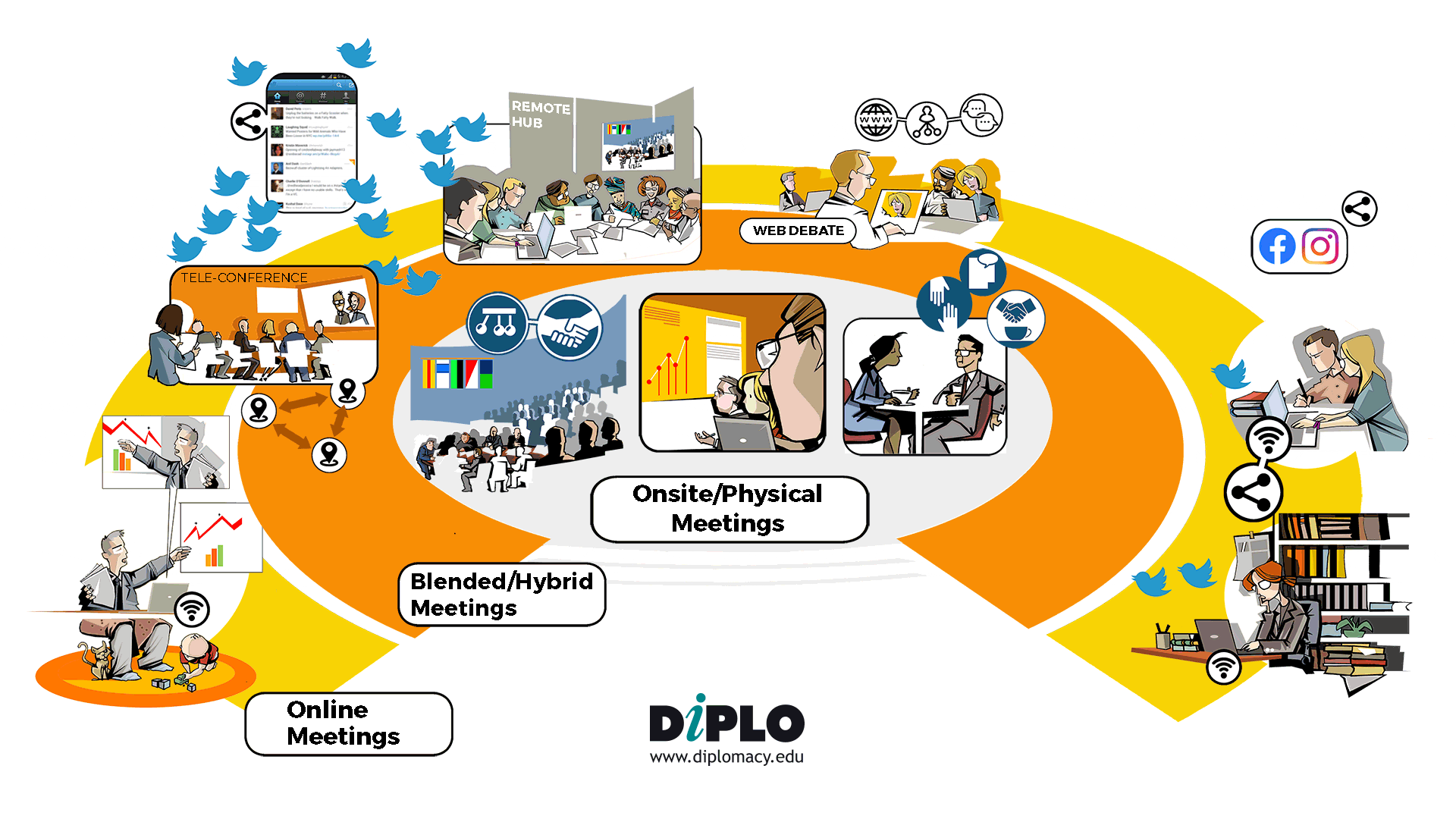Future of meetings
In December 2019, Zoom reported 10 million daily users. Three months later, the number of Zoom’s daily participants jumped to more than 300 million.
The COVID-19 outbreak has dramatically altered our daily routines, shifting our day-to-day activities from offline to online. Online lectures, meetings, and conferences skyrocketed following the pandemic. New conferencing platforms emerged while existing ones gained in popularity.
Expressions such as the ‘future of meetings’, the ‘future of work’, and the ‘future of learning’ have been used extensively, each referring to a specific field of our daily activities which have been impacted by COVID-19.
New challenges began emerging the moment we shifted to meeting online. Some of the setbacks are related to the existing digital divide between regions/countries that have the necessary access and capabilities to use information and communications technologies (ICTs) and the internet, and those that do not. Other challenges have arisen with the increased popularity and use of online platforms.
Tackling the challenges
Following the pandemic outbreak, Diplo launched its ConfTech project to assess the challenges and opportunities of the shift to online work and learning. Since then, ConfTech has been publishing guidelines on the use of various online platforms, and providing advice to event organisers and moderators, as well as tips and tricks for organising successful and effective online events. All of these resources are available below.
In May 2020, Diplo addressed the shift towards online meetings in its landmark Future of Meetings online conference which included almost 600 participants. The event explored the five main aspects of the future of meetings: technology, security, moderation, behaviour, and diplomacy. A summary of the discussions can be found in the report available here. The main aspects of the future of meetings will be tackled in the following sections.
Technology and security of online platforms
One of the recurring questions when organising online events is how to choose the right videoconferencing platform. The influx of conferencing platforms, each claiming to offer easy videoconferencing, leaves many meeting organisers puzzled. For this reason, Diplo has conducted a comprehensive and comparative survey of online meeting platforms and outlined the basic features of each one to help users select the right option.
It is also worth noting that a number of regions still face obstacles in regard to internet infrastructure development which, to a large extent, impact one’s participation in online meetings. This is why an increasing number of platforms enable low bandwidth utilisation, by, for instance, adjusting resource usage depending on network conditions.
Online meetings are also prone to numerous security and privacy challenges. The sharp rise in videoconferencing increased the possibility of security breaches of all kinds due to security limitations of platforms. They can occur through participants’ computers, via their internet connections and online meeting platforms, such as Zoom, Microsoft Teams, and Webex.
‘Zoom bombing’ reports have been in the headlines ever since the pandemic broke out. Uninvited participants have been hijacking meetings, classes, and conferences, and using obscene language and visuals. On the other hand, manyfold leakages of meeting recordings, transcripts, and participants’ data have come to public attention and led platform companies to tighten their security and privacy settings.
There are a number of ways users can secure their online events. For example, meeting hosts can require a password for meeting attendees, set up waiting rooms, lock meetings, keep their software up-to-date, and encrypt meeting resources, to name but a few.
The future of meetings: What to expect?
So, what will the future meetings look like? Certainly, online meetings and hybrid (blended) meetings are here to stay. Some of the reasons include the ease of attending a meeting from anywhere in the world, lower costs, and environmental benefits. This is why adequate digital skills, effective moderation, and understanding technology, security-related risks, and social contexts will remain the key aspects of meetings and conferences.
Click to show page navigation!










